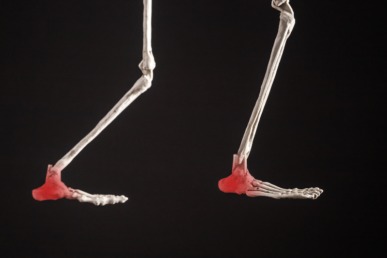Myofascial release is a form of physical therapy used to release tension in myofascial tissues. The myofascial tissues are the underlying connective tissues that act as levers and fulcrums when we move. Any tightness in these tissues restricts our body movement, which makes a human feel stiff, sore, and tight.
Breaking down the word myofascial, ‘Myo’ means muscular tissue, whereas ‘Fascia’ refers to the 3-dimensional connective tissue that connects and goes through every structure in the body from muscles, nerves, blood vessels, and cells down to the bones. As these tissues cover a wide range of areas, pressing these tissues is known to relieve pain from inflammation, pain, or scarring around these affected body parts.
How does myofascial release work?

Myofascial release is a massage therapy performed by professional chiropractors and physical therapists.
It is useful in the case of soft tissue injuries like back and shoulder pain, neck pain, ligament injuries, muscular pains, numbness, sprains and strains caused by repetitive motions (like throwing a baseball or basketball), sciatica, lower back pain, and more.
In simpler words, myofascial release works by massaging and pressing the trigger points around the stiff tissues. The medical practitioner will first press certain areas where the patient feels rigid. Once the areas affected are identified, the therapist begins pressing the trigger points to release the pressure. This process is repeated multiple times until the therapist believes the tension has been released.
A patient may be experiencing pain in a different area than where the therapist works with his fingers and palms. They focus on the trigger points that are actually responsible for releasing tightness for a broader set of muscles underlying them. In short, pressing trigger points of a body area is how myofascial release works.
How does Myofascial Release help in sports injuries?

No matter the nature of the sport, any sports injury that results in a soft tissue injury can be rectified using myofascial release. It has helped athletes and sportspeople add more swiftness to their actions and, at the same time, enhance their performance.
Myofascial release, when combined with an expertise of a physical therapist expert, also helps prevent sports injuries altogether.
People generally tend to avoid pain. This is one of the reasons they end up with chronic pain. Myofascial release can be performed on-field and can help relieve the injury then and there. Any delay would mean dealing with the pain for much longer.
Sports injuries are usually caused due to repeated strenuous action and through repeated high-impact movement required while swimming, golfing, tennis, baseball, and other sports. Swimming requires repeated muscular movements when diving and thereafter. Similarly, golf requires impactful movement of both hands and legs to aim a hole.
Any movement can get excessive at any time during the play. Remember how top-seed tennis player, Alexander Zverev, had to leave the finals against Rafael Nadal at Roland Garros? The injury was caused mid-play due to an ankle and ligament tear. Though, his case was severe and required surgery to recover. It will not be wrong to say myofascial release would have helped him well on the way to his recovery thereafter.
Remember that it is beneficial only for soft tissue injuries and should not be performed when the patient:
- Has been using blood thinners
- Had surgery recently
- Has an underlying tumor
- Has open wounds
- Has weak bones or has a broken bone
- Has deep vein issues
Myofascial release is usually provided to patients with chronic pain. Contrary to popular belief, sports athletes suffer from chronic pain more than they are accounted for. According to research that studied the prevalence of back pain in 181 elite athletes from different sports like badminton, volleyball, tennis etc, it was found that “lifetime prevalence of back pain was 85%, the 12-month prevalence was 75%, the 3-month prevalence was 58%, and point prevalence was 38%; for the physically active control group, these prevalence were 81%, 70%, 59%, and 43%, respectively”. Thus, when provided at the right time, myofascial release can help a number of sports personalities recover and perform well.
Conclusion
Many sports personalities continually take pain medications to deal with chronic pain. These can be avoided through other ways of mitigating pain, one of these being myofascial release. To learn more about the procedure and to discover how we can help, contact us today.





